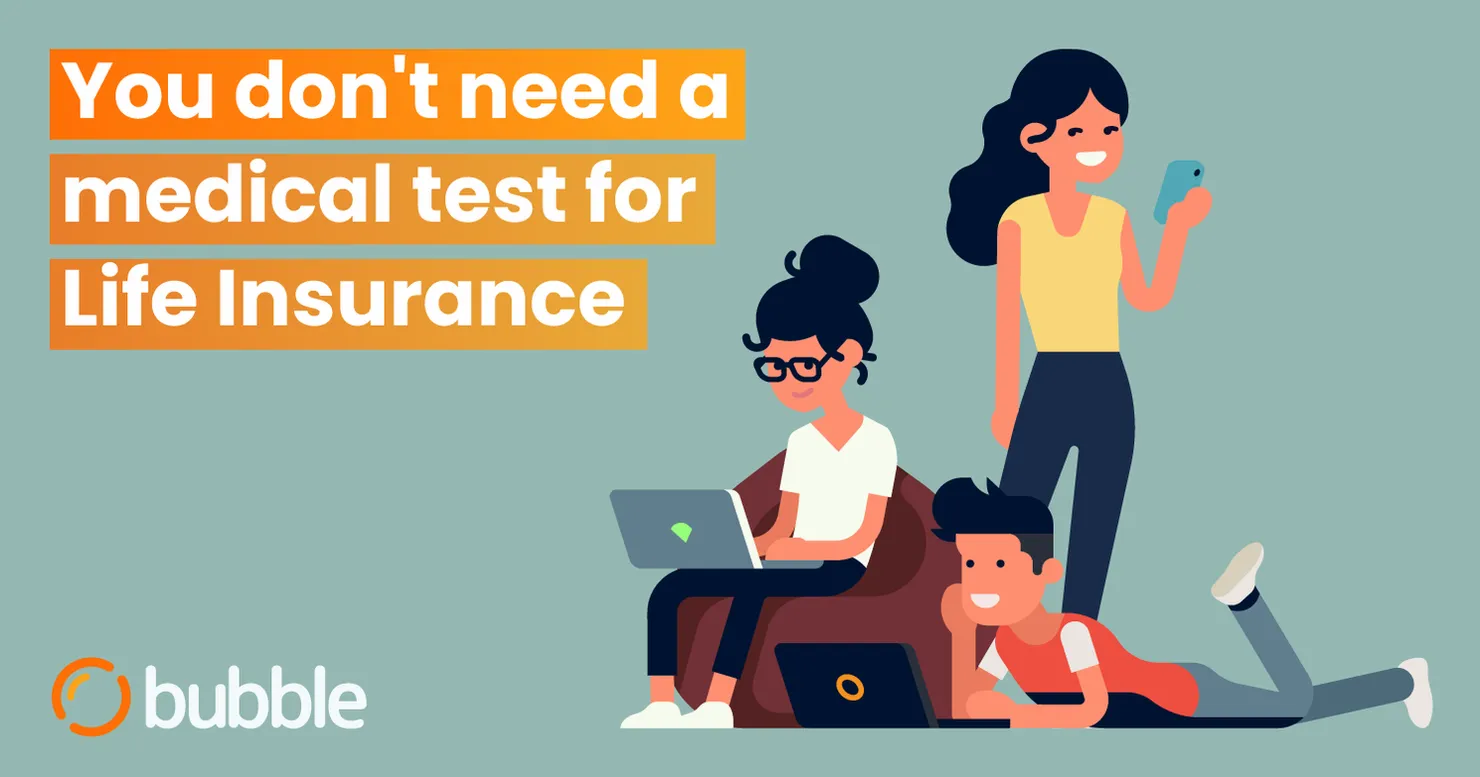Blog

Pallavi Shastry
July 07, 2021
Women have the purchasing power now
The number of single women who’re buying homes in America compared to their male counterparts is growing at a remarkable rate. A new report by LendingTree has found that in 50 of the largest metropolitan areas of the United States, single women own more homes than single men do. And the average age of women buying homes for the first time is 33. Young, independent, and financially educated women are taking the real estate world by storm!
 Given how women’s space in the professional world, as well as home, has grown multifold (there’s still a long way to go though), a growing, and in some cases, a major part of big decisions like home buying, investments, and insurance are being made by women today. When couples browse for their new home, it’s often the woman who eventually decides whether or not they’re buying that house.Regardless of where they are personally, women have become important decision-makers with trillions in spending power today. Single women, especially those with children, are the second-largest set of homebuyers after married couples. Today’s women have more independence – financially and socially. And that has made them realize the importance of making the right choices that will never render them dependent on anyone else.
According to LendingTree's study , in America's top metropolitan areas, single women own 22% of homes while single men own 13%. It’s a new kind of gender gap we’re seeing here. Breaking the norm of married couples buying homes to build their family, single women are slowly changing the rules for themselves today.
As women take the lead in reshaping and restructuring our society, they are still the ones to think about their dependents. Whether it’s buying a home for themselves or their family, or buying insurance, women have carefully considered what’s best for the future of their families. Despite the persisting wage gap, women have still found ways to empower themselves financially and with them buying homes now more than ever, we’re going to see a big shift in financial power.
Reasons for this gap between men and women with homeownership aren't completely clear yet. But it’s safe to say that women prioritize buying a home from a young age. If you’re a woman reading this, you should know that buying a home is always going to be a big objective and we have a few tips for you to keep in mind while you achieve this goal.
Research
The first step to making a big purchase or an investment is to find out as much information as you possibly can to know what you’re about to get into. From mortgage to insurance, make it your priority to know everything. Information is the best tool you can have.
Location
Sit back and think about your ideal day in your home. You may be living in the busiest part of town right now but is that where you want to buy a house? Or do you want to move to the suburbs? What are the benefits of buying a house in either of these locations? Do you want pets? There’s a lot to factor in.
Budget
Your budget can help you zero in on the location and size of your home. Look at your finances and get help understanding them to set the right budget. Learn about what you can and can’t fit in your budget to lessen the pressure.
We hope this helps you move in the right direction towards buying a home for yourself. It’s a big move but it will be the best move for you.

Pallavi Shastry
July 07, 2021
You don't* need a medical test for Life Insurance
The most important factors that determine the cost and kind of life insurance policy you can get are age and health. You are most likely to be in good health in your younger days – 35 and under, let’s say. That’s why the younger you are, the more affordable your life insurance can be. With a good health record and age on your side, you can very well lock in a low premium for the rest of your life. At the same time, if you are young and healthy, life insurance companies do not need to carry out intrusive, messy tests to determine if you are healthy enough to qualify for a policy. Just a few questions usually suffice. Not many people, especially young people, are aware of this fact. Buying insurance has always had the bad rep of being a long, worn out, and expensive process with too many people to talk to and too many hoops to jump through - and yes, a medical test at the end of it all.
Being in the digital age has proven to be a blessing. Insurance buying has become a less complicated and more affordable process. At Bubble, that’s exactly what we’re doing to help every single one of you get the right Life Insurance policy - at the right age, at the right time.
The above graph shoots it straight – life insurance gets more expensive and difficult to buy with age. The younger you are, the cheaper it is. And the probability of needing a medical test done is negligible. With an enjoyable user experience, ease of purchase, and no medical test there isn’t really a reason or excuse why you shouldn’t buy life insurance before you’re 30. It’s one of the best things you can do for yourself and your loved ones when you’re young and healthy.
By [eliminating medical tests](https://www.forbes.com/advisor/life-insurance/no-exam/), life insurance becomes more affordable, convenient, and quickly issued to you.
When you’re 30 or under, you are more likely to be in good health than say when you’re 33 even. And your premium might easily jump from $10 to $30. Of course, there are other factors like whether you’re a smoker or not and other such. This is why getting something like life insurance out of the way as early as you possibly can is the best advice you can get.
If you want a reminder of why you need life insurance, here it is. Your family’s financial future.
Life is short. Don’t let important life decisions fall short too.

Ashok Bardhan and Robert Edelstein
January 21, 2021
Shelter, Risk and Uncertainty: Housing and Insurance in the Covid and Post-Covid Era
The COVID-19 epidemic has affected every aspect of daily activity. It has adversely impacted a wide range of economic sectors and occupations, especially those which involve face to face, proximate interaction, collective gatherings, services which need physical proximity and contact, and economic activities that require collective operations in close spaces.
The overall economy has taken a significant hit, with the 2020 forecasted GDP slated to decrease by 3.5%; as of November, there are 8 million fewer people employed than in the month of February prior to the onslaught of the pandemic; and in the month of November, there were 14.8 million people who were unable to work because the employer closed or lost business due to the pandemic, of which 12.7 million did not receive pay*.
Many sectors and occupations have suffered significant decreases in output and employment, with transportation, personal services, restaurants, hospitality, and tourism especially adversely affected. On the other hand, a number of economic activities have seen a major bump in demand and output. The most well-known, of course, is the information technology sector, which, by definition involves distanced, remote activity, both individual and collective; companies whose business models rely on online marketing and provision, e.g., E-Commerce firms; companies active in the remote supply of entertainment, media and gaming; and of course those that facilitate the entire infrastructure of online activity, from delivery to distanced learning, to Internet-based collaborative tools, such as Cisco Webex or Zoom.
HOUSINGSomewhat less known are sectors that have benefited because of specific attributes related to the spread and impact of coronavirus. The shelter in place policies have generated a dramatic increase in the “value” and importance of your ultimate refuge - your home. If most of the activities are now home-based, with a substantial part of the work that was formerly conducted at offices and workplaces, and shopping done in retail outlets now launched from home, then the “time value” of housing has surged significantly, everything else being equal**.
The following charts demonstrate how the housing market has been changing in the past few quarters during the Covid era. Many of the housing variables that reflect the
Figure 1Figure 2
The Case Shiller Index underscores the fact that it is not just the usual urban coastal housing markets, such as the Bay Area and New York, but other urban areas as well that have surged in 2020.
Google mobility data, gleaned from cell phone locations, provides movement trends and time spent by geography across different categories of places such as retail and recreation, groceries and pharmacies, parks, transit stations, workplaces, and residential. The data shows how the number of visitors to (or time spent in) categorised places changed compared to the baseline days (before COVID restrictions), i.e., the median value from the 5-week period Jan 3 – Feb 6, 2020.
The daily data shows that the urban counties of San Francisco, Arlington county outside Washington, DC, and Queens county, New York City were some of those which had the highest increase in time spent in residential spaces. The two spikes are in April and then again in December. There’s been an overall increase ranging between 30 and 40% over baseline in terms of time and duration spent at home. Unsurprisingly, these are also the places which have experienced the largest drop in workplace visitationsranging between 70 and 90%. Indeed, the following chart shows the change in online work trends from home due to COVID-19 in the US.
Figure 3The Covid 19 pandemic has impacted housing and mobility in another way as well. There has been an outflux of people from dense central-city environments, which were once attractive because of the many entertainment, cultural, and recreational activities available. Former urban dwellers have headed to the peri-urban, suburban and outlying suburban areas, thereby increasing both rents and housing prices in these markets. A number of former renters in cities have bought housing in these new places. As an example of the impact of urban/suburban mobility and migration, our models demonstrate that while most Bay Area and outer Bay Area housing markets, such as Sacramento moved in tandem in earlier years, in 2020 the downturn in rentals in San Francisco and the upswing in housing market metrics in places like Sacramento has been remarkably different, displaying a strong migratory impact. The following chart shows the results of the survey taken on recent homebuyers during the pandemic.
Figure 4Insurance
At the same time, the heightened uncertainty and risk awareness regarding health has given a fillip to the demand for insurance products. Some surveys show the increase in anxiety and consumer apprehensions, as can be seen from the following chart****:
Figure 5While the chart above shows the state of mind from survey results and Internet search queries provide information about the intentions of consumers, the table below shows people voting with their wallet. What are the products and services that people have been spending more money on, particularly relative to previous years?
Figure 6Data show that there is a correlation between searches for both housing and insurance products, sanitation products, cleansing and medical preventative products, on the one hand, and the regions where the coronavirus spread has been particularly devastating. It’s too early to determine definitively whether risk assessment revisions have led to any change in insurance premium pricing (except in the case of automobile insurance premiums, which have been dramatically impacted negatively since driving overall has been curtailed resulting in lower claims.)
Looking AheadThe pandemic has had many direct and indirect impacts on household behavior, occupations and economic sectors. In this blog we reflect on how the combination of shelter in place behavior in response to health risks and directives of local authorities, as well as perception of increased risk and uncertainty have caused the housing and insurance sectors to surge.
We believe that “the time value” of housing services has increased because of Covid and the subsequent shelter in place policies; on the other hand, there is increased perception of risk and perils; your Home is the last refuge in an uncertain world, and there will continue to be spillover increased demand for products that can be employed to manage, control, and mitigate risk.
While the Covid era is extending into 2021, we believe that both housing and insurance markets will display hysteresis, even as the post Covid period emerges; that is, even after the underlying cause - the Covid epidemic - subsides, many of its impacts will remain. These impacts might be manifested in pent-up demand for housing, the willingness of people to spend more on housing, everything else being equal, as well as heightened desire to purchase insurance and hedge against risk. We believe there will be a significant burgeoning demand for bundled products that straddle both Housing and Insurance. At the same time, increased data availability, ubiquitous digitization, AI augmented risk and pricing models combined with sound financial and economic theory, and a heightened focus on customer interactions will help develop new kinds of financial products –new kinds of mortgages bundled with other products, targeted insurance products and cross-risk applications. These next-generation products will plug gaps in underserved markets, provide comprehensive security and “peace of mind,” and help customer deal with risks to her home, property, family and life.
* 2 The American Time Use Survey Data show that an employed person in normal times spent between 13-15 hours in “home related” activity in a 24 hour period. In the Covid era, it should be well over 20, if not close to 24! ** level of activity of the housing market have surged in 2020 relative to 2019. These include sales, prices, days on market, offers per listing, etc***. ***The lower mortgage rates, designed to keep the economy afloat have also played a part in the increase in homeownership and housing market outcomes. ****Google Trends data show spikes in March to June 2020 for searches relating to anxiety, uncertainty and risk. Also, see https://www.cnbc.com/2020/10/14/life-insurance-sales-increase-due-to-coronavirus-pandemic.html, for accounts of double-digit increases in the number of life insurance policies sold during the Covid-19 pandemic relative to last year.
 **How much coverage do you need?**
Now that we’ve established how life insurance can be affordable, let’s look at your finances a little closer.
- Mortgage
- Medical bills
- Kids’ future college tuition
- Other debt
Consider all the above factors before picking a policy. Ensure your coverage amount covers all these future expenses and more. Don’t buy life insurance because you hear people say how important it is. Buy it because you understand why it’s important. When you know how much coverage you need and why you need it, life insurance becomes a lifesaver for your loved ones. Bubble’s automated guidance platform can help sort out all the intricacies for you.
You might say you have “enough” saved up for your children’s future needs. But do you?
- Would it be enough to cover your child’s college education?
- Would it be enough to pay off your mortgage and any other debt you leave behind?
If you can’t answer any of these questions, you might want to consider buying life insurance with coverage that can help keep your children financially looked after when you're no more. Yes, nobody and nothing can replace a parent’s love, care, and protection. You are your kids’ safety net now; but if you’re no more, life insurance can at least partially serve as one...
**How much coverage do you need?**
Now that we’ve established how life insurance can be affordable, let’s look at your finances a little closer.
- Mortgage
- Medical bills
- Kids’ future college tuition
- Other debt
Consider all the above factors before picking a policy. Ensure your coverage amount covers all these future expenses and more. Don’t buy life insurance because you hear people say how important it is. Buy it because you understand why it’s important. When you know how much coverage you need and why you need it, life insurance becomes a lifesaver for your loved ones. Bubble’s automated guidance platform can help sort out all the intricacies for you.
You might say you have “enough” saved up for your children’s future needs. But do you?
- Would it be enough to cover your child’s college education?
- Would it be enough to pay off your mortgage and any other debt you leave behind?
If you can’t answer any of these questions, you might want to consider buying life insurance with coverage that can help keep your children financially looked after when you're no more. Yes, nobody and nothing can replace a parent’s love, care, and protection. You are your kids’ safety net now; but if you’re no more, life insurance can at least partially serve as one...







